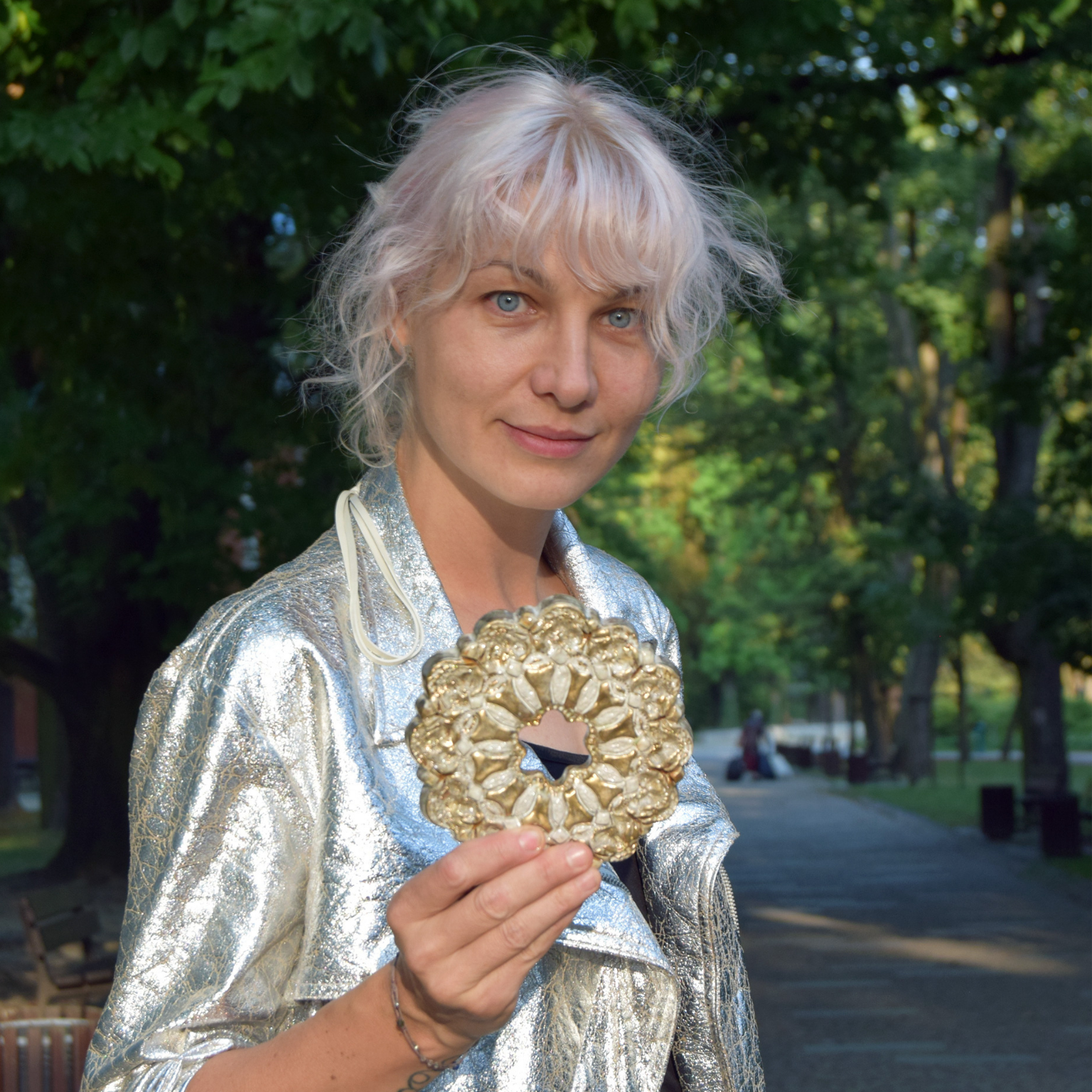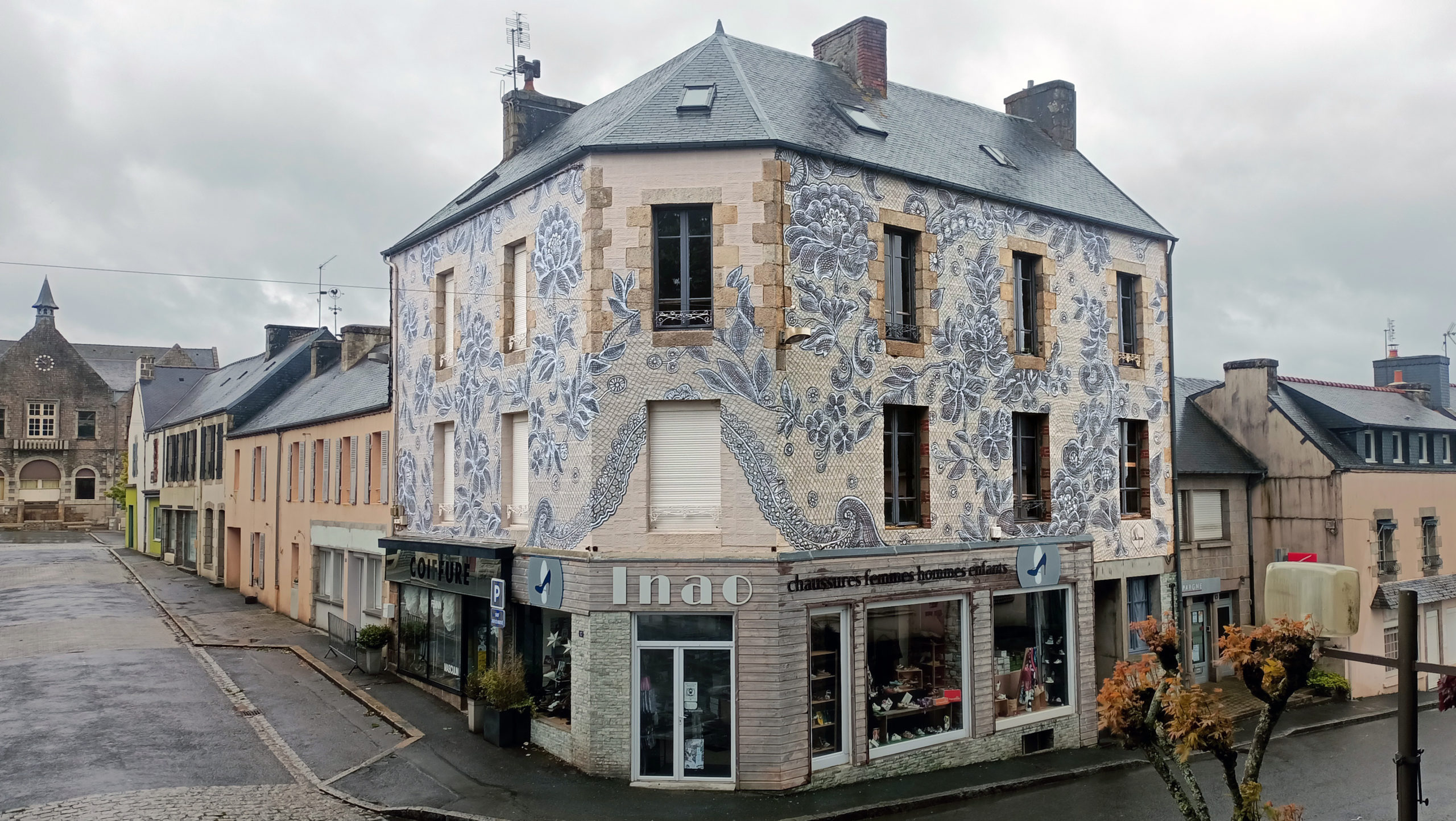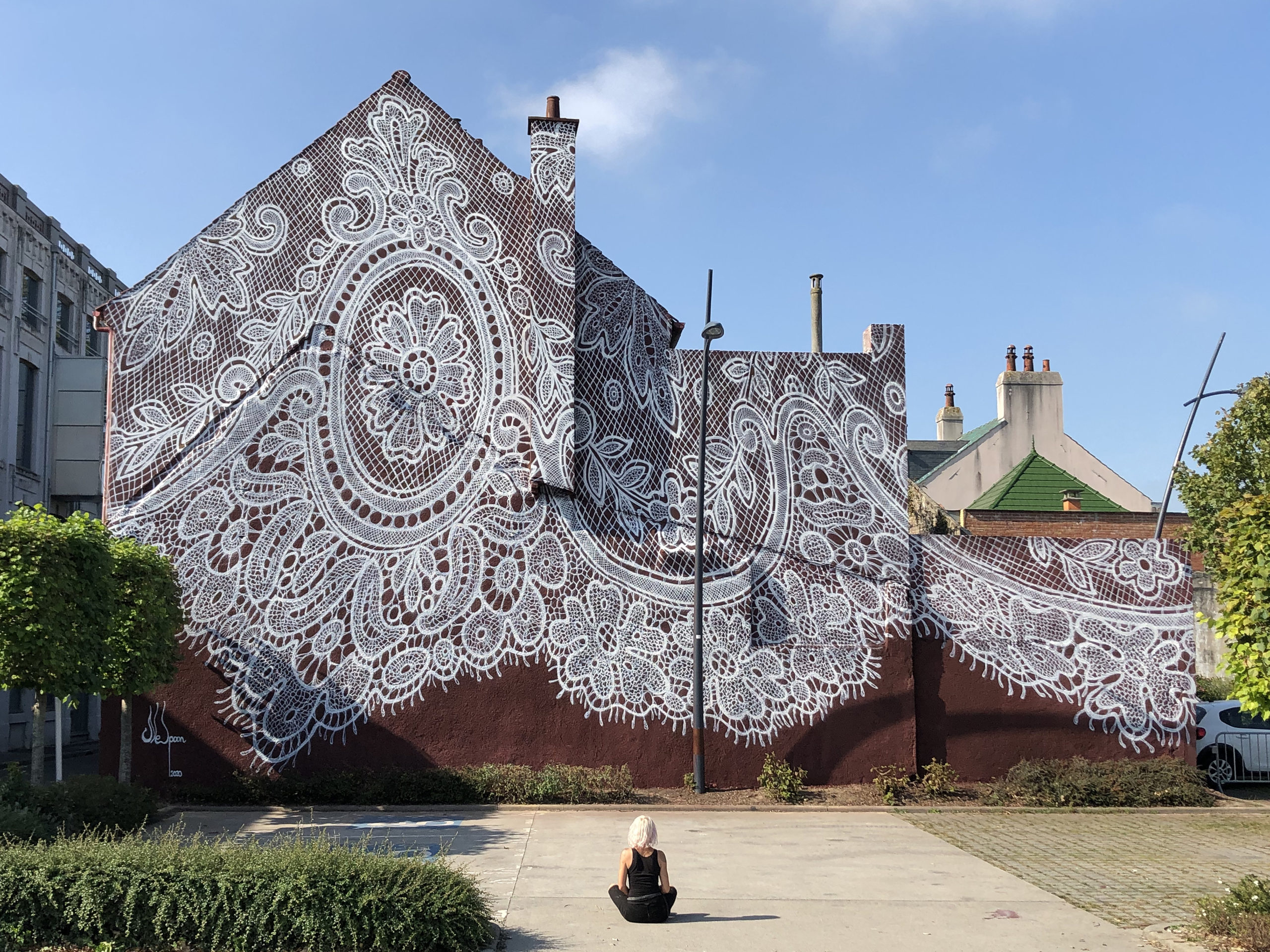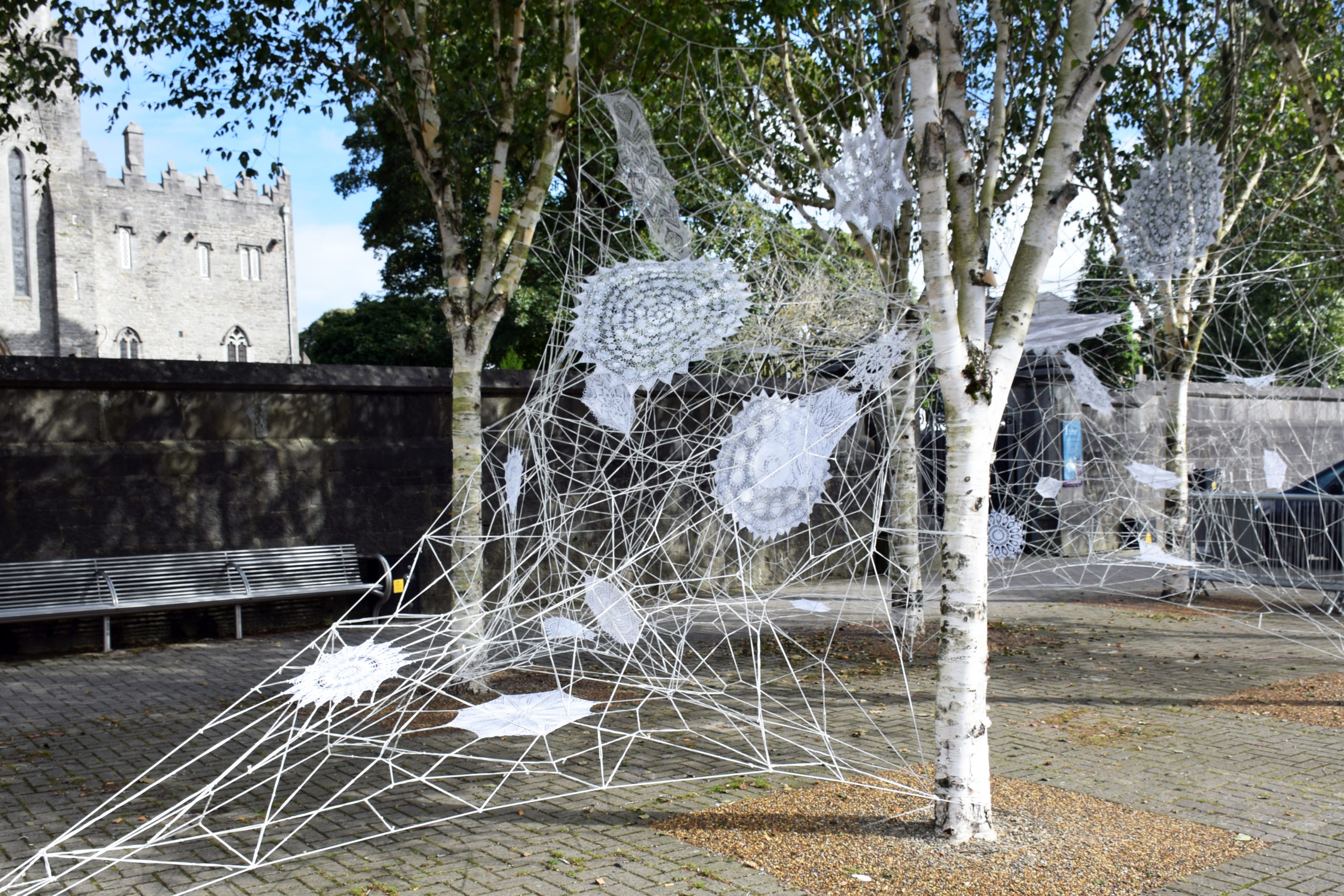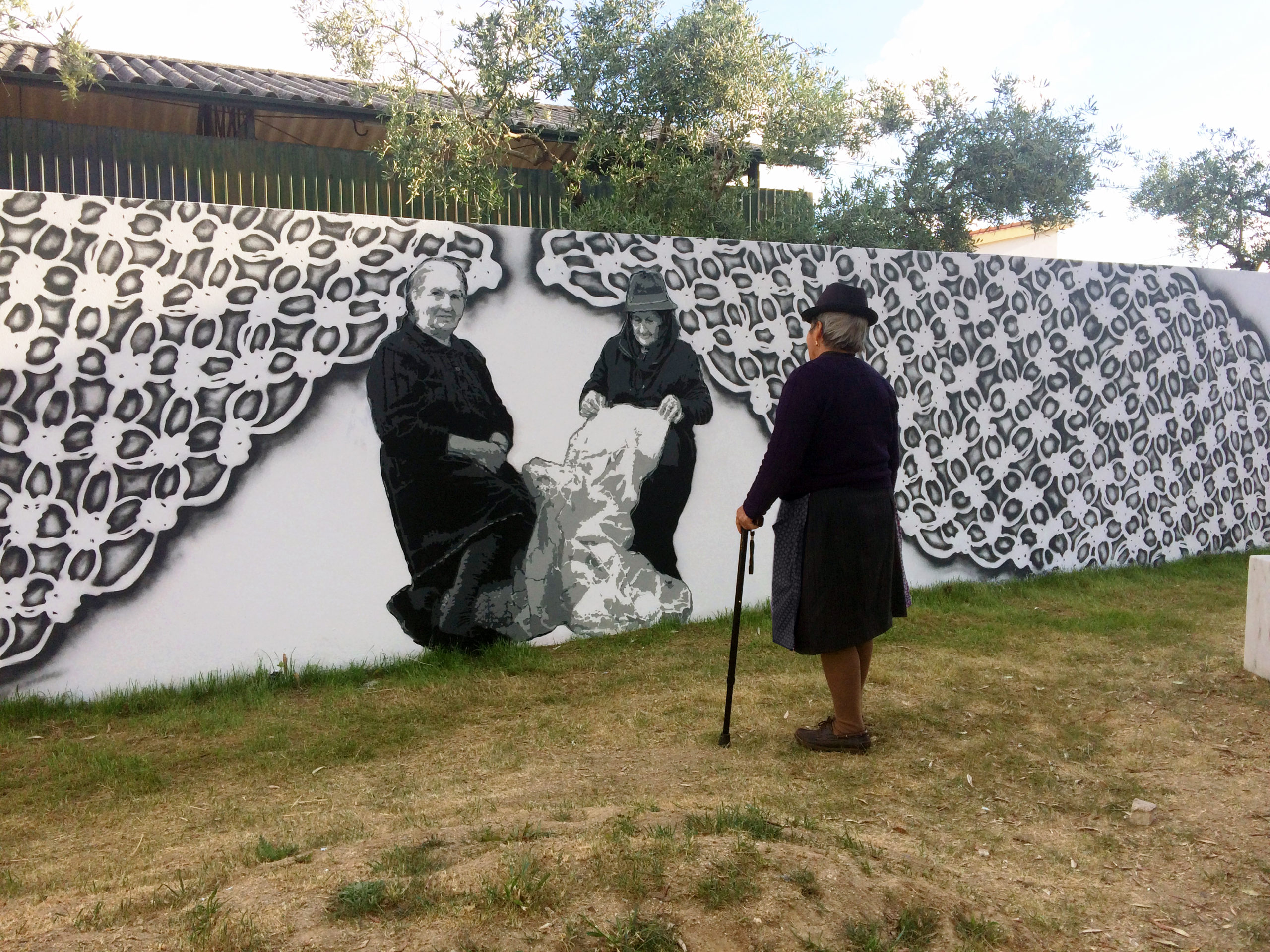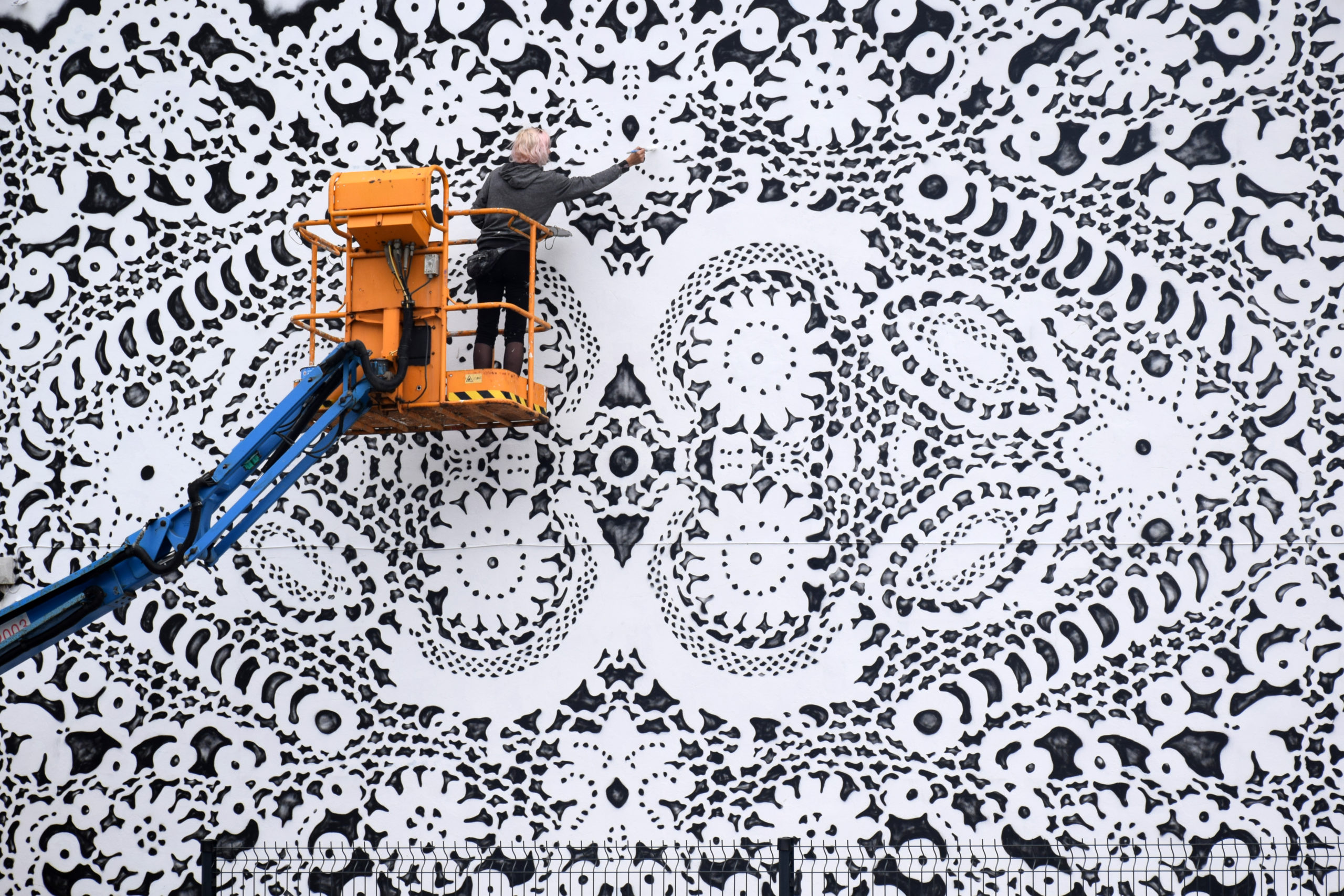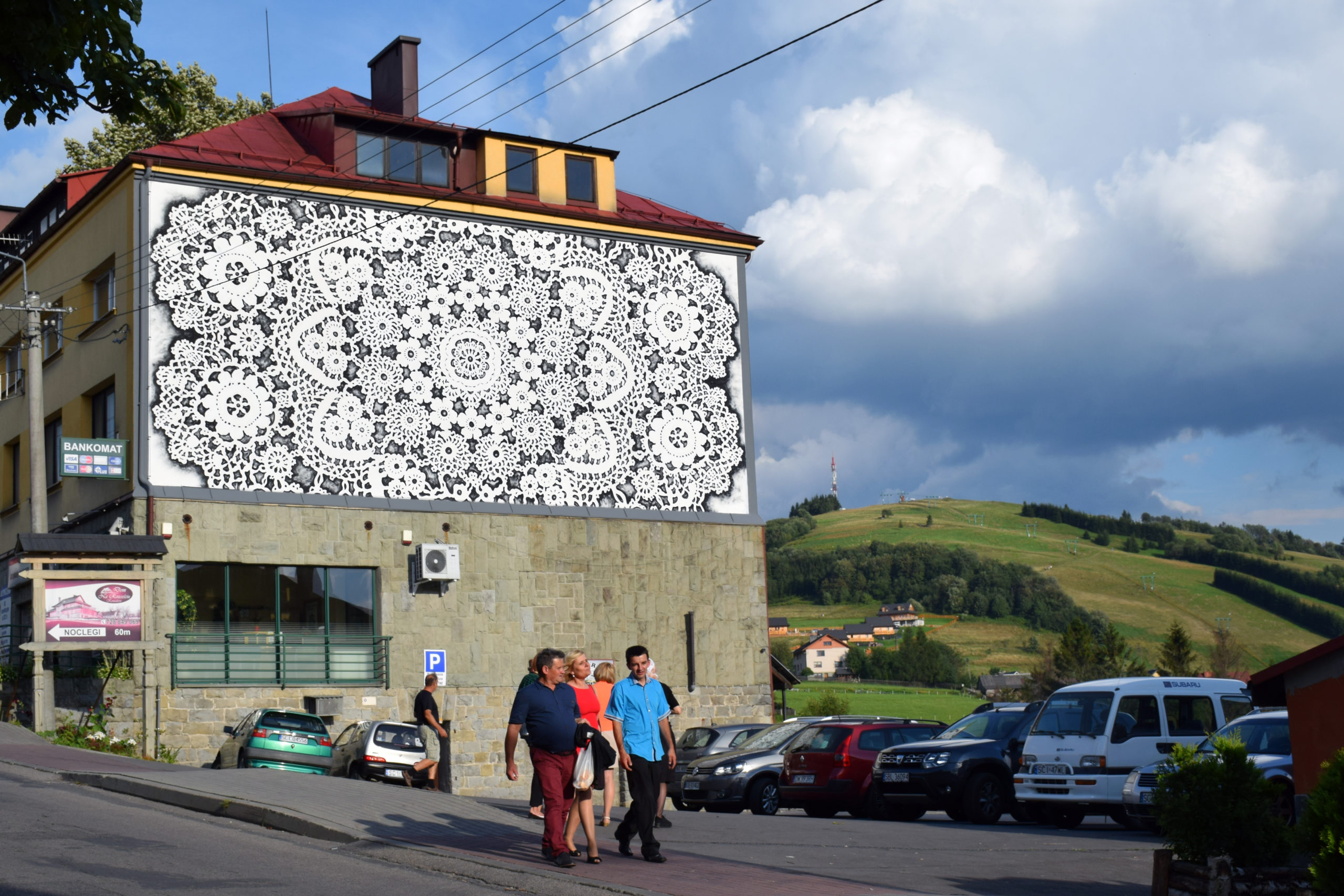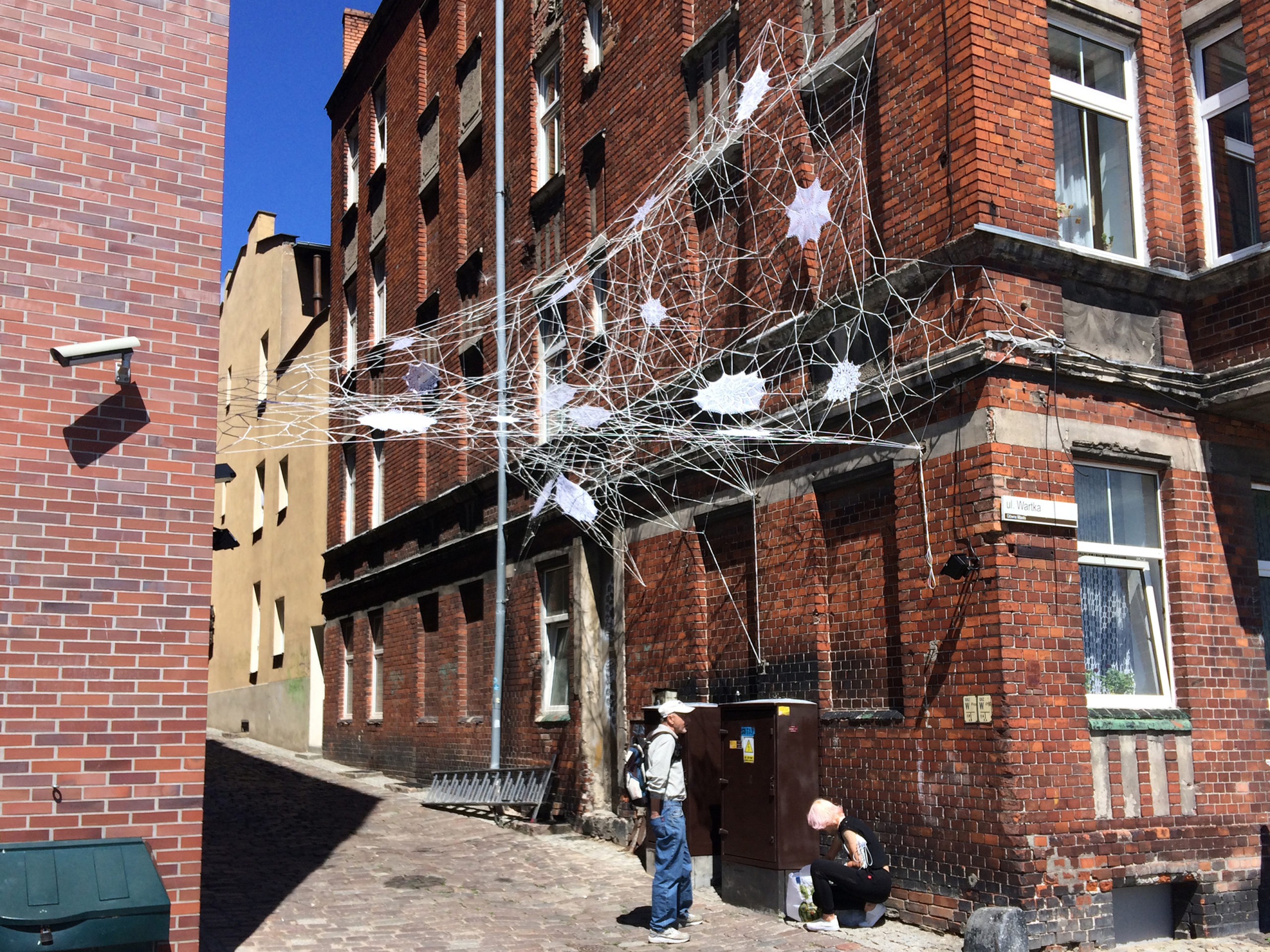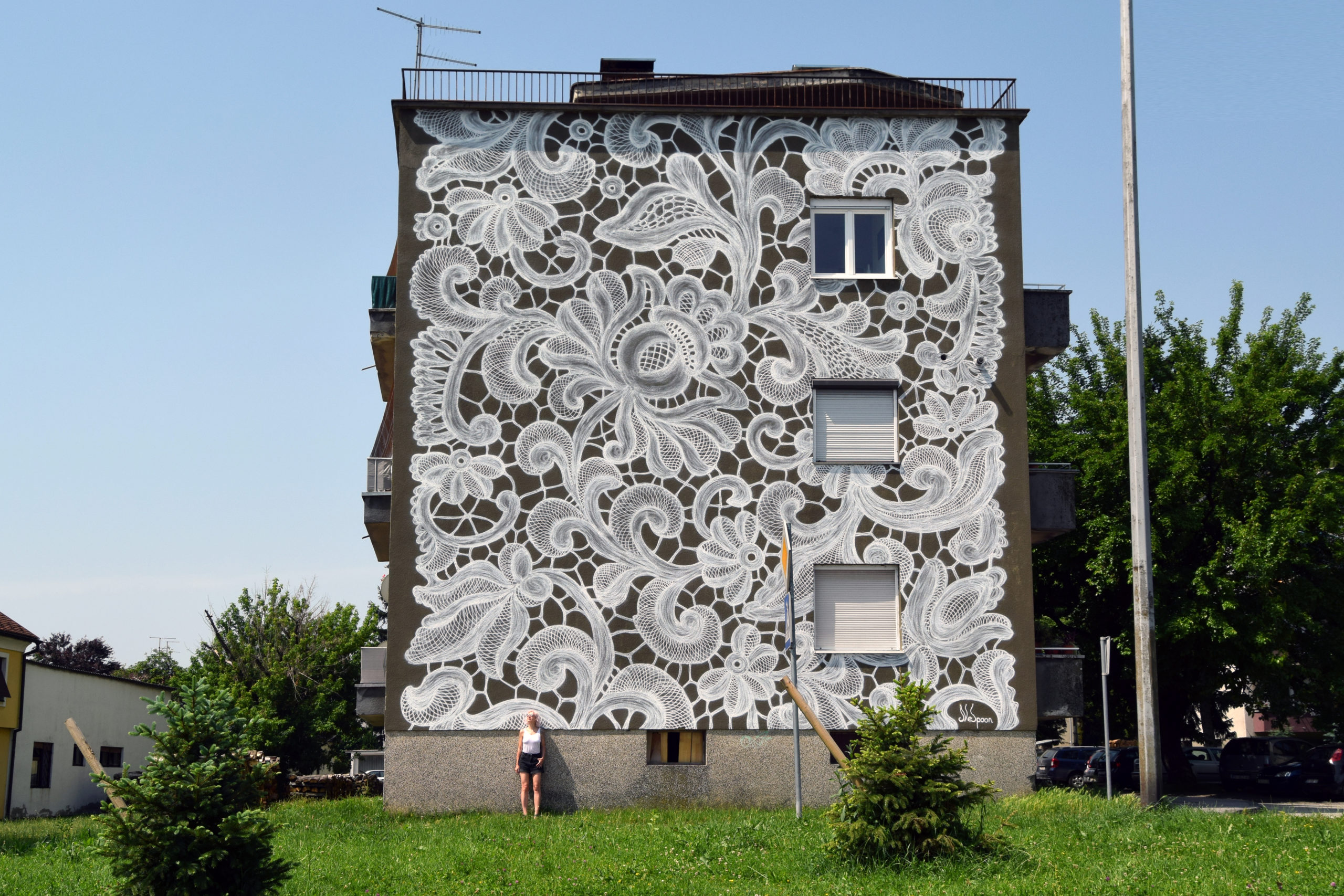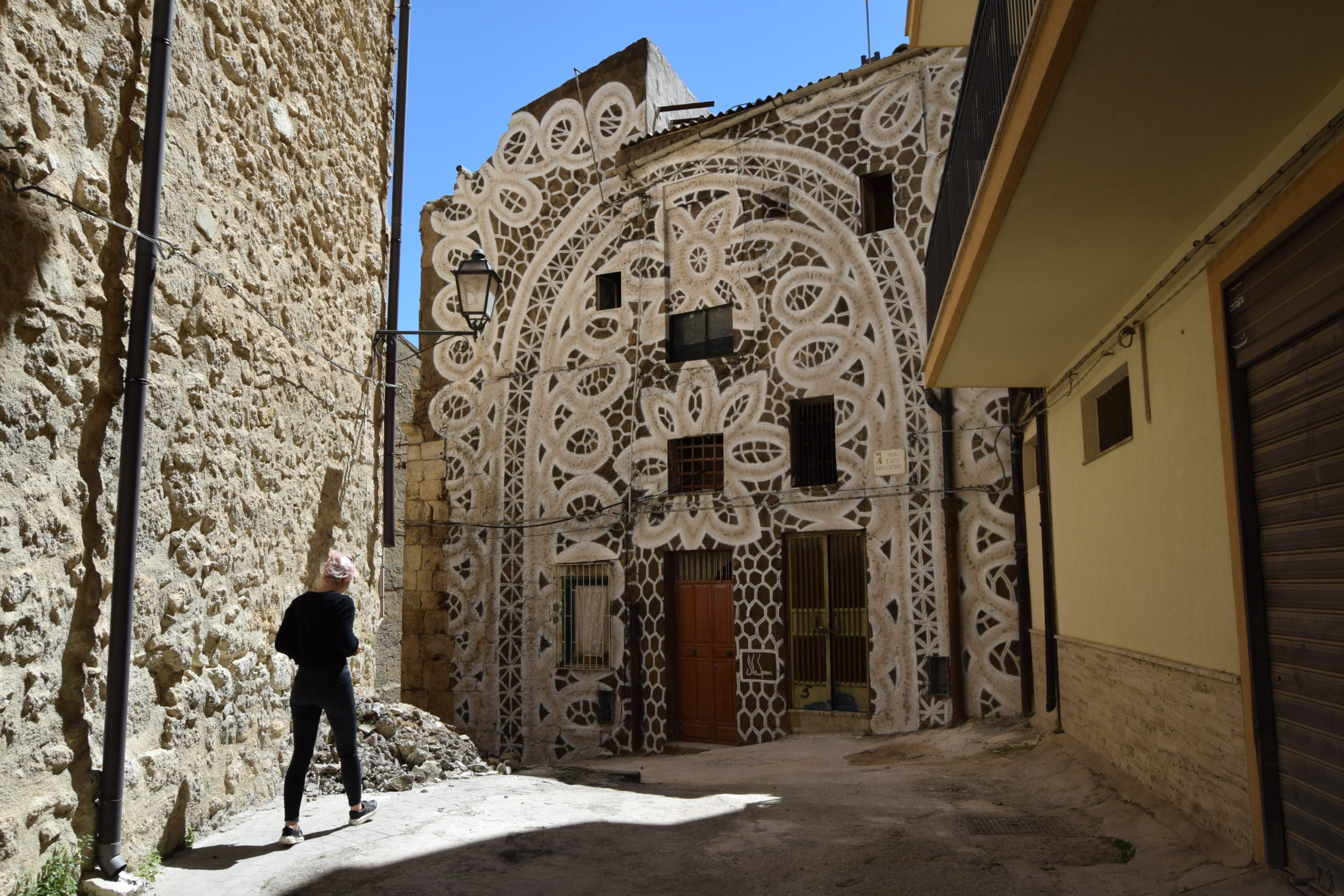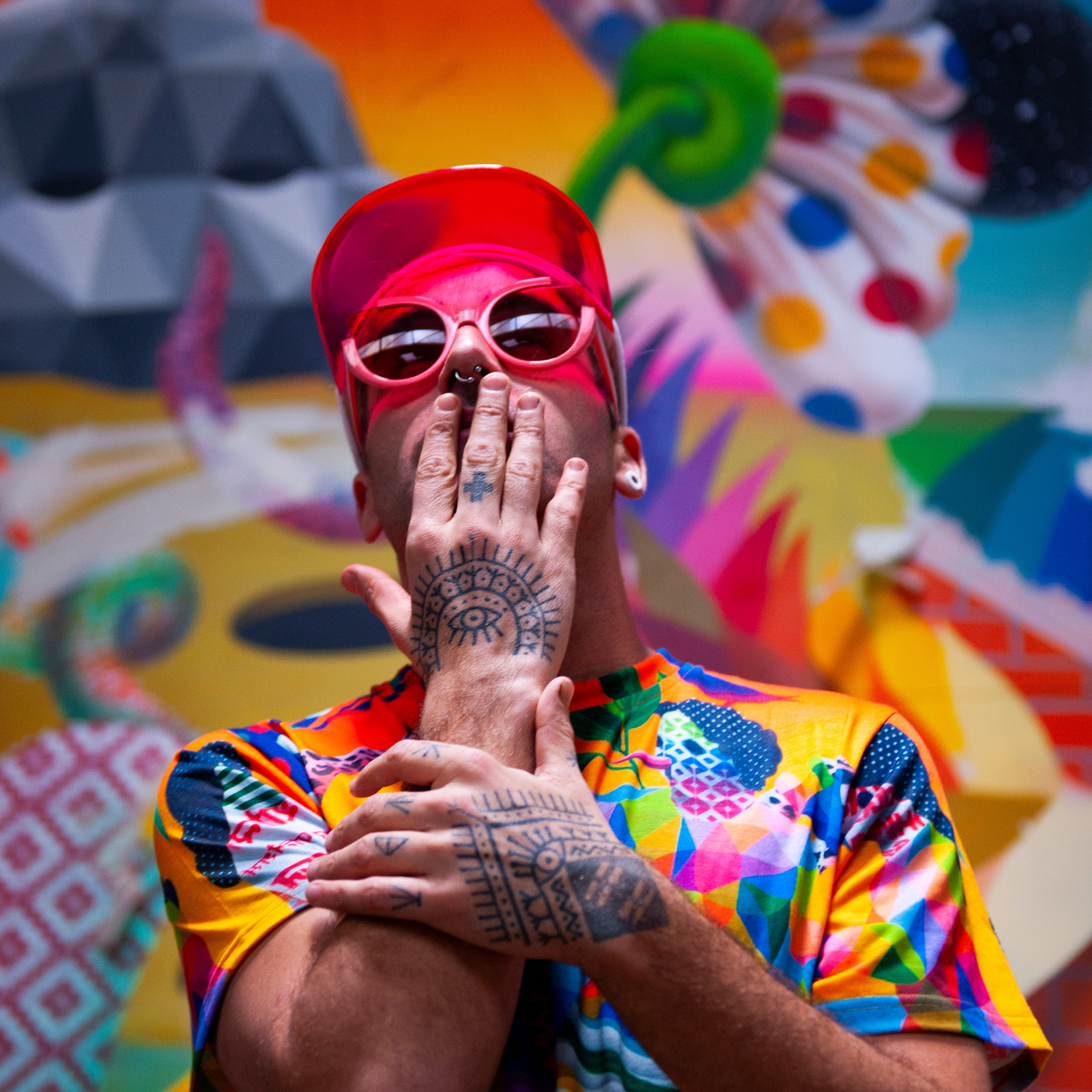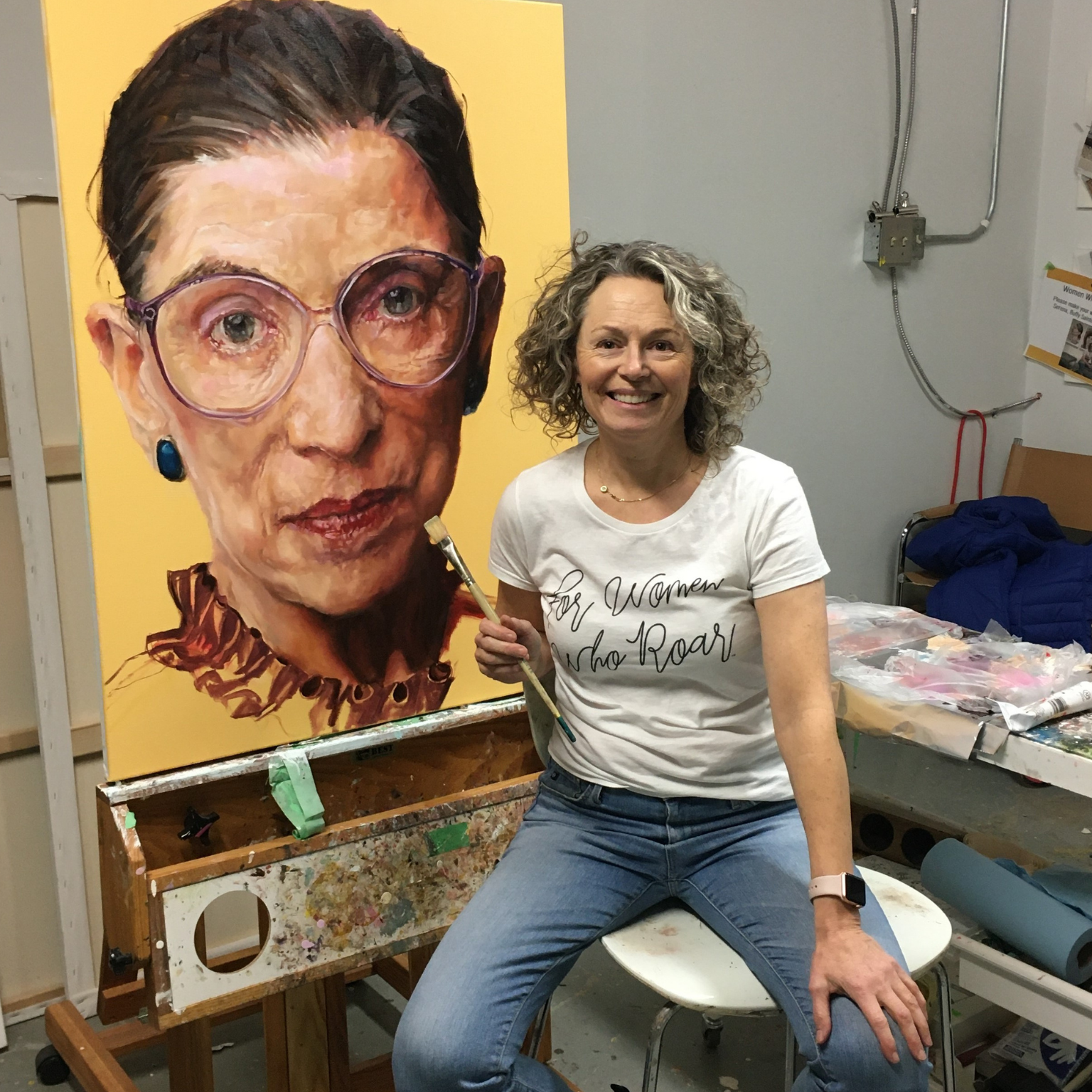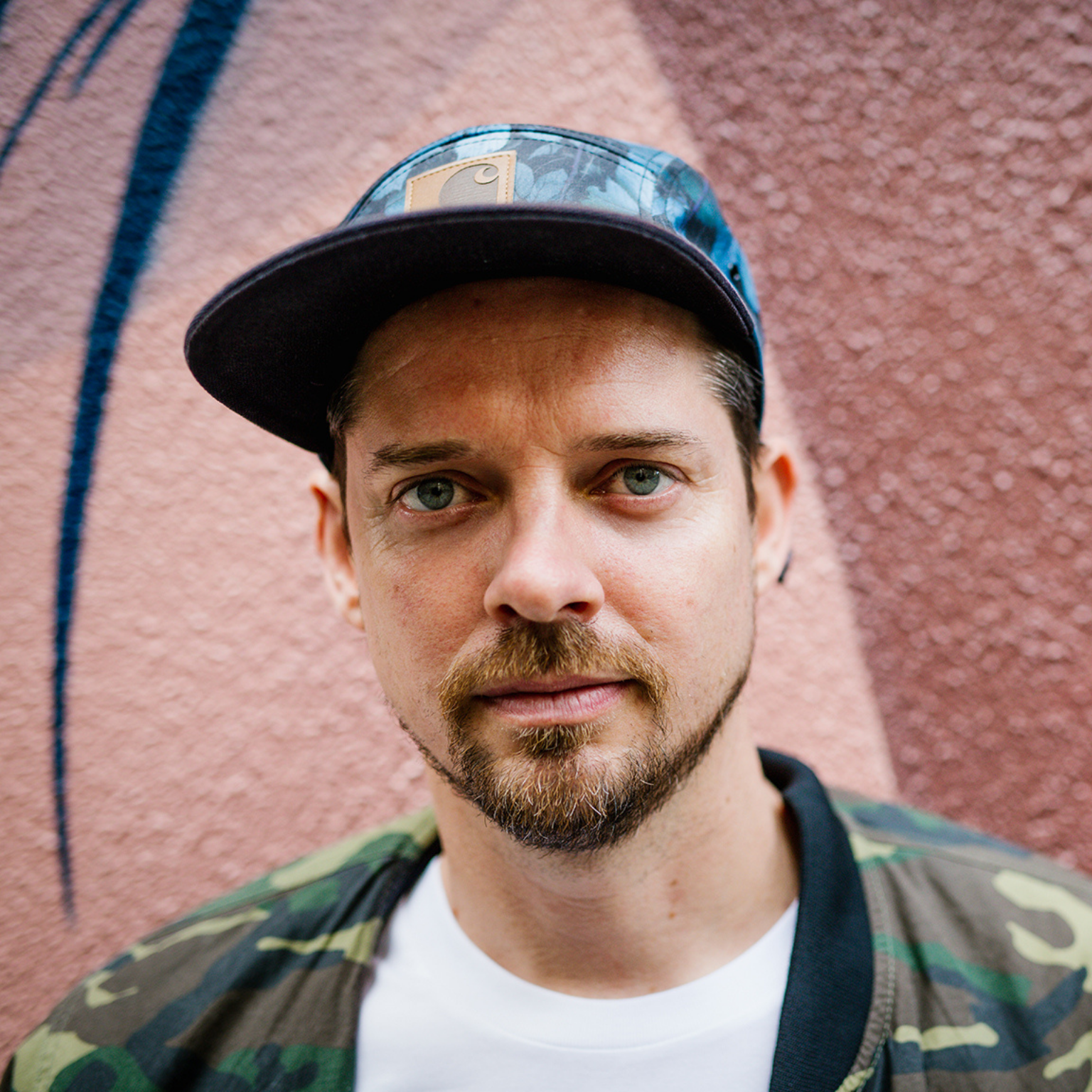NeSpoon, artist from Poland. Photo © Courtesy of the artist
1.Tell us what you do and your beginnings.
I have been painting since I can remember, since kindergarten. I wanted to be a “real artist” at the age of 5, when other girls dreamed of being princesses or fairies. However, I only started to do art on the streets in 2009 and it was kind of rebirth. Before that, I painted dark, sad oil paintings. At one point I found it to be a dead end. I had a two-year break and then I started learning about ceramics.
It was ceramic objects with lacy motiffs that were the first works I placed on the street. A graffiti, murals and installations appeared in the following two years.
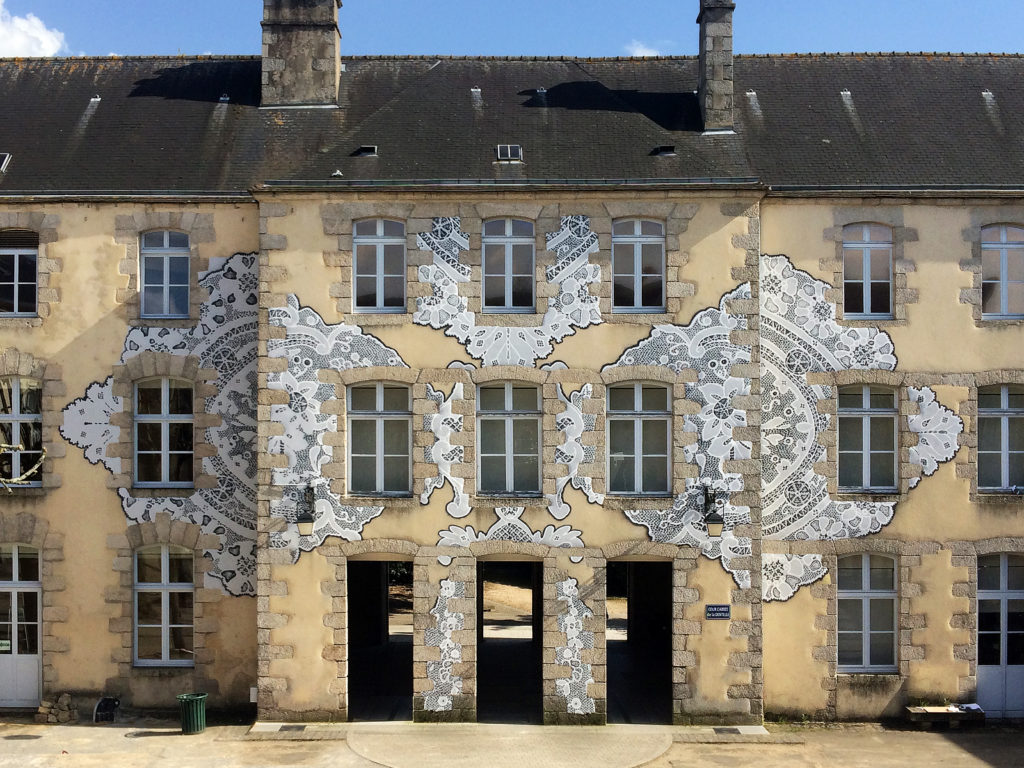
Sometimes, I also comment in my art social and political issues that I consider important, but these projects are not as easy in perception as lacy street art. I show them mainly in art galleries so they are not as popular.
2.What does your work aim to say?
I try to make positive art and to deal with positive emotions. It seems to me that in every laces there is an universal aesthetic code, which is deeply embedded in every culture. When I add colours to my ceramics, people say that I am inspired by Tibetan Mandalas, or Moroccan Ceramics, or even native pre-Columbian art. Lace patterns contain some very basic code of beauty, common for most people on Earth.
These motifs come from nature. They are present all around us, in goblets of flowers, in snowflakes, in frost on the window, in the skeletons of sea creatures. They are older than humanity and people just react positively when they see it. I like to think that my works emit positive energy and empower people. I often get feedback like this.



Bolsena, Italy and on the right, both made in Warsaw, Poland © NeSpoon
3.Where do you find inspiration for your art?
Contemporary culture is said to be a sample and remix culture. This also works for me. I never made lace myself and I don’t know how to do it. I buy them from craftswomen, on a flea markets, in antique shops. I make a lot of pictures in handicraft museums. Based on these resources, I create my own ornaments, tailored to a specific place. I sample and transform patterns, combine them and give them a new form and a new context.
4.Could you give us some insight into your creative process?
All over the world one of the most popular ways to decorate dishes is pushing the lace onto fresh clay. This is how the pattern is created. One day I thought that these motifs are beautiful on their own. They don’t need an excuse such as a plate or a mug to exist. I started to make such no-purpose lace objects and glue them somewhere on the streets. Then these patterns began to appear in my head on buildings, so I started to really paint them.
My art is always in situ made, set in a local context. I always use local lace patterns, if they exists. I check local museums. I respect and commemorate the emotional bound between individual patterns and particular cities or even particular groups of lace makers. If there is no tradition of lace making in the area where I work, I ask for laces in the homes of elderly people living nearby. I always find something.
5.What are your future projects?
My aim is to do large scale multimedia installations in public spaces. At the exhibition in 2042, I will show my project “Thoughts”, which started in 2012. Every year, I make small porcelain petal-shaped forms for several months. I am able to produce about 50 kg of these objects per year, today there are 400 kg of them, 1500 kg will be on display in 2042. Now I am releasing a photo book summarizing 12 years of my work and one of my installations will be exhibited at Expo Dubai.
Interview by Fabio Pariante, journalist / Twitter – Instagram
MORE
NeSpoon on social networks: Instagram – Facebook – YouTube
NeSpoon is a Polish artist born in 2009 in Warsaw, as she loves to tell because it was the year she started painting on the streets. Her art looks like poetry because it is based on the creation of traditional laces that seem to have been born in Italy, in Venice in the 1400s. They are unusual to see on the streets of the cities, but they make the landscape elegant, harmonious and delicate to the eye of the viewer, just like real lace! Her art takes shape through various materials such as ceramics, painting, sculpture and jewelery.
Among the works of street art, NeSpoon has created a large mural in Calais, France, a place that has always been an industrial center for the production of lace. A few years ago, the Chanel brand also dedicated an exhibition to the French city; 11 ensembles were created that illustrate the savoir-faire of the Maison and its Métiers d’art. With the spray can, the artist decorated the facade of the Cité de la Dentelle et de la Mode inspired by the Leavers lace of the Dognin firm of 1904 preserved in the museum’s archive.
In 2016, however, the Minister of the Environment granted permission to increase timber extraction in the Bialowieża Forest, located between Belarus and Poland (the last natural lowland forest in Europe and a UNESCO World Heritage Site) and to denounce this decision, Nespoon made ceramic casts as a reminder of something essential for the community, but which no longer exists. Among the most important places where she exhibited, there are the Louvre Museum in Lens, Urban Nation Biennale in Berlin, Harmony-Walls in Bologna and Recrafted in Perth. NeSpoon lives and works in Poland.
